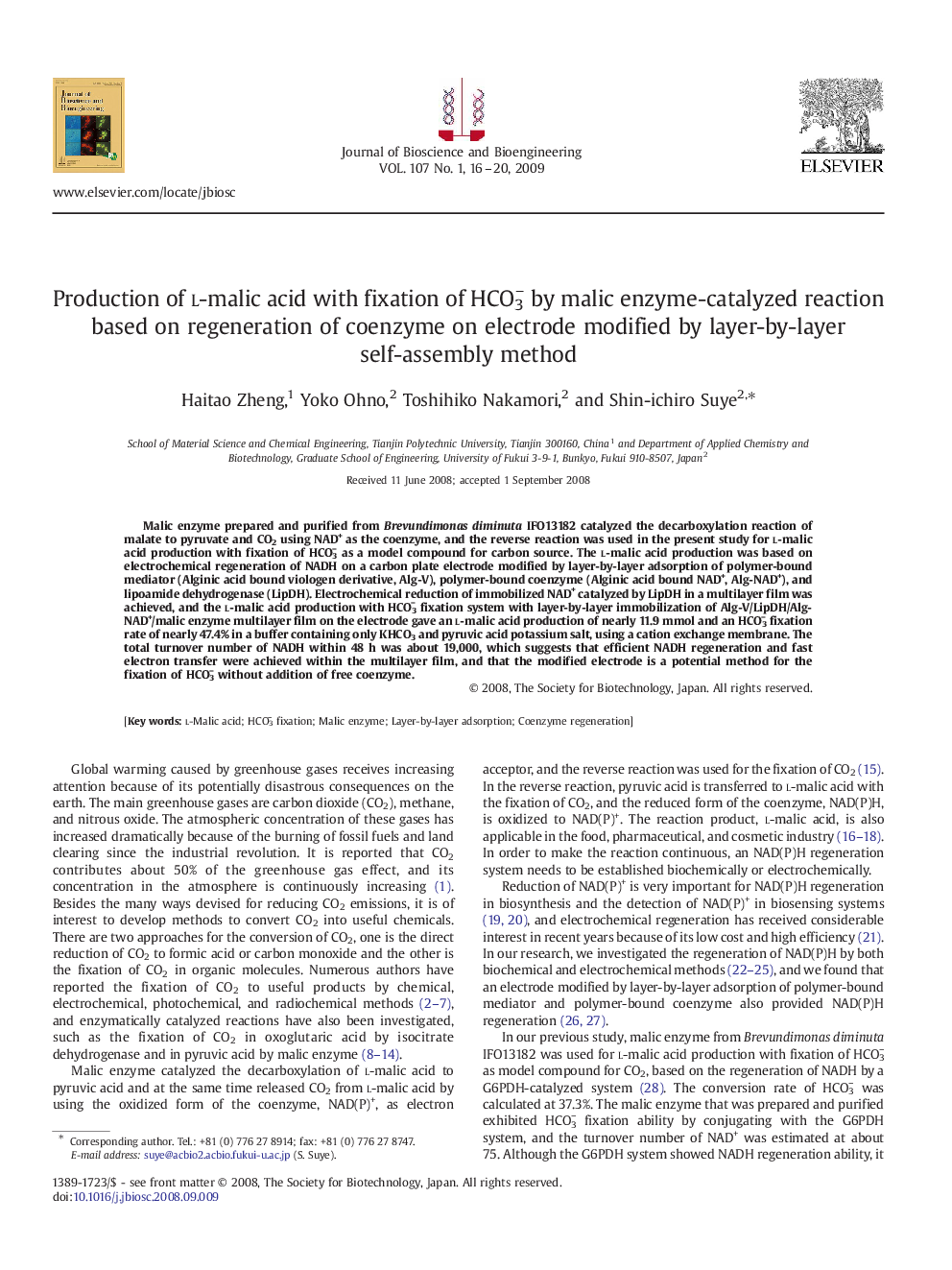| Article ID | Journal | Published Year | Pages | File Type |
|---|---|---|---|---|
| 21948 | Journal of Bioscience and Bioengineering | 2009 | 5 Pages |
Malic enzyme prepared and purified from Brevundimonas diminuta IFO13182 catalyzed the decarboxylation reaction of malate to pyruvate and CO2 using NAD+ as the coenzyme, and the reverse reaction was used in the present study for l-malic acid production with fixation of HCO3− as a model compound for carbon source. The l-malic acid production was based on electrochemical regeneration of NADH on a carbon plate electrode modified by layer-by-layer adsorption of polymer-bound mediator (Alginic acid bound viologen derivative, Alg-V), polymer-bound coenzyme (Alginic acid bound NAD+, Alg-NAD+), and lipoamide dehydrogenase (LipDH). Electrochemical reduction of immobilized NAD+ catalyzed by LipDH in a multilayer film was achieved, and the l-malic acid production with HCO3− fixation system with layer-by-layer immobilization of Alg-V/LipDH/Alg-NAD+/malic enzyme multilayer film on the electrode gave an l-malic acid production of nearly 11.9 mmol and an HCO3− fixation rate of nearly 47.4% in a buffer containing only KHCO3 and pyruvic acid potassium salt, using a cation exchange membrane. The total turnover number of NADH within 48 h was about 19,000, which suggests that efficient NADH regeneration and fast electron transfer were achieved within the multilayer film, and that the modified electrode is a potential method for the fixation of HCO3− without addition of free coenzyme.
